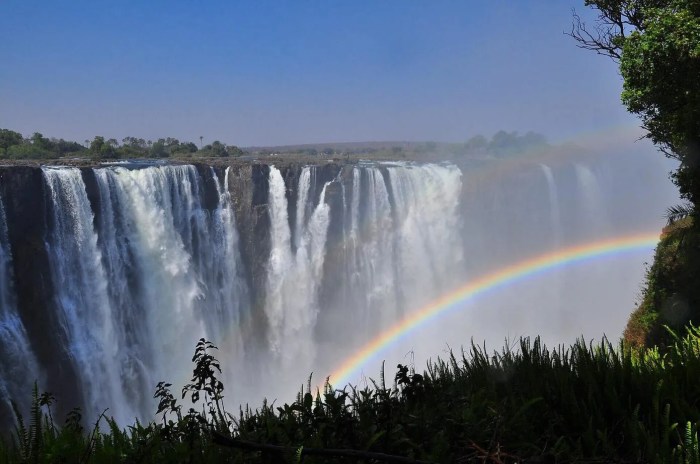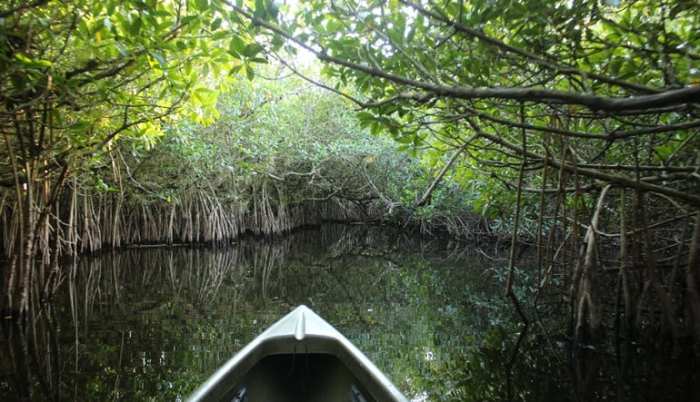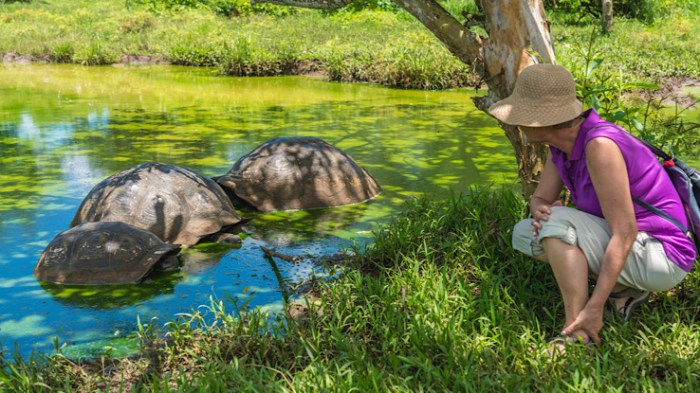Everglades Eco Adventure A Natural Escape
Everglades Eco Adventure offers a unique opportunity to immerse yourself in the vibrant ecosystem of the Everglades. Explore the diverse flora and fauna, from the iconic alligators to the myriad bird species, all within a landscape shaped by centuries of history. Discover how eco-tourism plays a vital role in preserving this fragile environment, and prepare to embark on unforgettable experiences.
This comprehensive guide delves into the various eco-adventures available, including guided tours, wildlife viewing, kayaking, and hiking. We’ll explore the planning process, from essential gear to choosing the best time to visit, while highlighting safety guidelines and the importance of respecting the environment. Discover the fascinating wildlife, learn about responsible eco-tourism practices, and uncover the diverse accommodations and amenities near the Everglades.
Introduction to Everglades Eco Adventure

The Everglades, a vast subtropical wilderness in Florida, is a unique and vital ecosystem. Its intricate network of waterways, sawgrass prairies, and hardwood hammocks teems with life, creating a captivating landscape. This adventure delves into the heart of this extraordinary environment, exploring its diverse flora and fauna, its rich history, and the crucial role of eco-tourism in its preservation.
This eco-adventure offers an immersive experience, allowing participants to witness the wonders of the Everglades firsthand. Through guided tours and interactive encounters, visitors gain a deeper appreciation for the delicate balance of nature and the importance of responsible conservation.
Everglades Ecosystem Overview
The Everglades ecosystem is a complex and fascinating wetland system. It’s characterized by slow-moving water, providing a unique habitat for a wide array of plant and animal life. This unique environment supports a remarkable biodiversity, crucial for the health of the entire region.
Flora of the Everglades
The Everglades’ plant life is as diverse as its animal life. From the iconic sawgrass prairies that dominate the landscape to the diverse array of trees and shrubs in the hardwood hammocks, the flora plays a critical role in supporting the entire ecosystem. These plants provide habitat, food, and shelter for numerous species. The sawgrass, for example, is a key component of the ecosystem, providing food and shelter for wading birds and other animals.
Fauna of the Everglades
The Everglades is home to a remarkable array of wildlife. This includes a wide range of mammals, reptiles, birds, and fish, each playing a vital role in the delicate balance of the ecosystem. Alligators and crocodiles are prominent, demonstrating the strength of the Everglades’ food chain. The diverse birdlife is a sight to behold, including wading birds, raptors, and songbirds. The ecosystem supports a variety of fish species adapted to the unique water conditions.
Historical Significance of the Everglades
For centuries, the Everglades have been a vital part of the cultural and ecological fabric of South Florida. Historically, the Everglades provided a source of sustenance and livelihood for Indigenous peoples. The region’s rich history, including the stories of those who have lived there for generations, forms an integral part of its cultural significance. This heritage underscores the importance of preserving the Everglades for future generations.
Importance of Eco-Tourism in the Everglades
Eco-tourism in the Everglades plays a crucial role in supporting the region’s conservation efforts. Guided tours and educational programs raise awareness about the Everglades’ unique ecosystem and the importance of protecting it. Responsible eco-tourism practices contribute to the economic well-being of local communities while preserving the natural environment. These activities create a symbiotic relationship between economic growth and environmental protection.
Types of Eco-Adventures
The Everglades National Park offers a diverse range of eco-adventures, catering to various interests and experience levels. From leisurely nature walks to exhilarating kayaking expeditions, visitors can immerse themselves in the unique ecosystem and witness the abundant wildlife. These adventures provide opportunities to appreciate the delicate balance of the fragile Everglades environment while ensuring responsible tourism practices.
The Everglades ecosystem is best experienced through guided tours, providing insights into the region’s history, ecology, and biodiversity. These tours are designed to maximize the educational and recreational value of the experience, while simultaneously minimizing environmental impact. The diverse range of activities available caters to both independent explorers and those seeking structured guided excursions.
Guided Tours
Guided tours are an excellent introduction to the Everglades. Expert guides provide valuable insights into the flora and fauna, the history of the area, and the challenges facing the ecosystem. Tours often include stops at scenic overlooks, providing panoramic views of the unique landscape. These tours can be tailored to various interests, from birdwatching to alligator spotting. Guided tours often prioritize safety and environmental responsibility, ensuring a positive impact on the delicate ecosystem.
Wildlife Viewing
Wildlife viewing is a popular activity in the Everglades. Various platforms, including airboat rides and elevated observation decks, allow visitors to observe alligators, birds, and other fascinating creatures in their natural habitat. Careful observation and respectful distance are essential to ensure the well-being of the animals and the preservation of their natural behaviors. Appropriate binoculars or spotting scopes can enhance the experience, allowing for closer examination of the diverse birdlife and other wildlife.
Kayaking and Canoeing
Kayaking and canoeing offer a unique perspective of the Everglades. These activities allow for close-up encounters with the diverse plant life and wildlife that inhabit the waterways. The tranquil waters of the Everglades offer a chance to experience the serene beauty of the ecosystem. Guided kayaking tours often include instruction on paddling techniques and wildlife identification, enhancing the learning experience. The flexibility of these activities allows for self-paced exploration of different parts of the ecosystem.
Hiking
Hiking trails within the Everglades provide opportunities for immersive exploration of the diverse landscapes. These trails vary in difficulty and length, allowing visitors to choose an option suitable for their fitness level. The Everglades’ unique ecosystem, with its distinctive plant life and terrain, offers a unique hiking experience. Hiking is an excellent way to observe the unique flora and fauna up close, and allows for the observation of rare plant species, such as the sawgrass and cypress trees.
Eco-Adventure Packages
| Adventure Type | Description | Duration | Price |
|---|---|---|---|
| Everglades Wildlife Discovery Tour | A full-day guided tour focusing on wildlife viewing and educational insights. | 8 hours | $150 per person |
| Kayaking Eco-Tour | A guided kayaking adventure through the waterways, emphasizing wildlife observation and paddling techniques. | 4 hours | $100 per person |
| Nature Walk & Birdwatching | A guided nature walk focused on birdwatching and identification, highlighting the diverse avian species. | 3 hours | $75 per person |
| Airboat Safari | An exhilarating airboat ride through the Everglades, offering close encounters with alligators and other wildlife. | 2 hours | $80 per person |
Planning Your Everglades Eco Adventure

Embarking on an Everglades eco-adventure requires meticulous preparation. Understanding the environment, packing appropriately, and adhering to safety guidelines are crucial for a successful and enjoyable experience. Knowing the best time to visit, along with the necessary permits, ensures a smooth and safe trip.
Careful planning and respect for the delicate ecosystem will enhance your appreciation for the wonders of the Everglades. This includes understanding the importance of minimizing your impact and following established protocols.
Essential Preparations
Thorough preparation is key to a memorable and safe eco-adventure. This involves considering the necessary gear, clothing, and permits required for navigating the unique environment of the Everglades. Understanding the conditions and acquiring the proper documentation will ensure a smooth and enjoyable experience.
- Gear Requirements: Appropriate footwear, such as sturdy hiking boots, is essential for navigating various terrain types within the Everglades. Water-resistant bags or backpacks are vital to keep belongings dry during potential rain showers or crossings. A hat, sunglasses, and sunscreen are crucial for protection from the sun. Binoculars are recommended for observing wildlife from a distance. Insect repellent is necessary to deter mosquitoes and other insects. A compass or GPS device is beneficial for navigation, especially in less-populated areas.
- Clothing Recommendations: Lightweight, quick-drying clothing is ideal for the warm, humid climate of the Everglades. Long pants and long-sleeved shirts offer protection from insects and potential vegetation scratches. Consider a rain jacket or poncho to handle unexpected showers. Comfortable hiking pants are preferable to other fabrics due to the variety of terrain and vegetation. A light jacket for cooler evenings is also useful.
- Permits and Regulations: Specific permits might be required for certain activities like airboat tours or camping. Adhering to park regulations and guidelines is critical for respecting the environment and avoiding potential penalties. Check the official Everglades National Park website for up-to-date information on permits and regulations.
Choosing the Best Time to Visit
The optimal time for visiting the Everglades depends on the type of experience you seek. Different seasons offer varying wildlife viewing opportunities and weather conditions.
- Wildlife Viewing: The dry season (November to April) is often ideal for wildlife viewing. Animals are more concentrated in water sources, making them easier to spot. The abundance of birds during migration seasons adds another layer to the viewing experience. This period offers clearer visibility in the Everglades.
- Weather Conditions: The wet season (May to October) brings abundant rainfall and increased humidity. However, it can also result in lush vegetation, offering unique opportunities to witness the Everglades in full bloom. Consider the possibility of rain showers during this period.
Safety Guidelines
Following safety guidelines is paramount for a secure and enjoyable experience in the Everglades. Understanding potential hazards and taking precautions can prevent unforeseen incidents.
- Avoidance of Alligators: Keep a safe distance from alligators and other wildlife. Do not feed or approach animals. Stay aware of their presence, particularly near water bodies. Respect their space, and they will respect yours.
- Sun Protection: The Everglades sun can be intense. Always wear sunscreen, a hat, and sunglasses. Stay hydrated by drinking plenty of water throughout the day. This will help to prevent dehydration and heat-related illnesses.
- Navigation: Be aware of the terrain and potential hazards. Stay on designated trails and inform someone of your itinerary. Have a backup plan in case of unforeseen circumstances. Use a compass or GPS, especially in areas with less visibility.
Packing Checklist
A well-prepared packing list will ease your journey and ensure a comfortable and safe adventure.
| Category | Items |
|---|---|
| Clothing | Quick-drying shirts, long pants, rain jacket, hat, sunglasses, sunscreen, comfortable shoes |
| Gear | Water bottles, reusable bags, backpack, binoculars, insect repellent, first-aid kit, compass/GPS |
| Documents | Park pass/permits, identification, emergency contact information |
Respecting the Environment
Protecting the fragile ecosystem of the Everglades is crucial. Adhering to environmental guidelines minimizes your impact and ensures future generations can enjoy this natural wonder.
- Leave No Trace: Pack out everything you pack in. Minimize your impact on the vegetation and wildlife. Do not litter, and respect the natural surroundings.
- Conservation Practices: Support organizations dedicated to Everglades conservation. Follow established guidelines and regulations. Be a responsible visitor.
Wildlife Encounters
The Everglades teems with a remarkable diversity of wildlife, each species playing a vital role in the delicate ecosystem. Observing these creatures in their natural habitat is a highlight of any eco-adventure, but it’s crucial to approach these encounters with respect and understanding. Responsible wildlife viewing ensures the preservation of these amazing creatures for future generations.
Observing wildlife in the Everglades requires a keen understanding of their behaviors and habitats. This knowledge enables respectful interactions, allowing you to appreciate the unique characteristics of each species and their intricate relationships with the environment. Respectful viewing promotes the health of the ecosystem and safeguards the animals’ natural behaviors.
Common Wildlife Species
The Everglades is home to a plethora of fascinating animals, including alligators, various bird species, deer, and numerous types of reptiles and amphibians. Each species has adapted to the unique challenges and opportunities presented by the Everglades environment.
- Alligators are apex predators that play a critical role in maintaining the balance of the ecosystem. Their presence signals the health of the Everglades’ food web.
- A vast array of birds, from wading birds to raptors, call the Everglades home. These birds are crucial indicators of the ecosystem’s health, and their presence reflects the rich diversity of the environment.
- White-tailed deer are a common sight in the Everglades, adapting well to the varied habitats and feeding on a range of vegetation.
- Reptiles and amphibians, including snakes, turtles, and various frog species, are vital components of the Everglades’ intricate food web.
Responsible Wildlife Viewing, Everglades Eco Adventure
Responsible wildlife viewing is essential for both the protection of the animals and the enjoyment of the experience. It is crucial to maintain a safe distance from the animals and avoid any actions that could disturb their natural behaviors.
- Maintain a safe distance from all wildlife. Never approach or feed animals, even if they appear docile. Disturbing their natural behaviors can have adverse effects on the individual animal and the ecosystem as a whole.
- Avoid using flash photography or loud noises that could startle the animals. Quiet observation is key to appreciating their natural behaviors without disruption.
- Refrain from littering or leaving any trash in the area. The Everglades is a fragile ecosystem, and maintaining its cleanliness protects the wildlife and their habitats.
Animal Behaviors and Interactions
Understanding the behaviors of different animal species helps in interpreting their interactions with the environment. For instance, alligators often bask in the sun to regulate their body temperature, while wading birds utilize their long beaks to forage for food in shallow waters. White-tailed deer are highly adaptable and have evolved behaviors that allow them to thrive in the diverse habitats of the Everglades.
- Alligators’ predatory behavior is essential for maintaining the food chain’s balance in the Everglades. Their hunting strategies and interactions with other species are vital aspects of the Everglades ecosystem.
- Birds’ feeding strategies and migration patterns showcase their adaptations to the environment. Their behaviors are often tied to the availability of food and water.
- Deer grazing patterns and habitat selection demonstrate their adaptability to the Everglades’ diverse landscapes. Their interactions with other species are part of the natural order.
Anecdotes and Stories
Many wonderful experiences and stories come from encounters with wildlife in the Everglades. A frequent experience is observing alligators sunning themselves, or watching wading birds in their intricate dance around the water’s edge. It’s important to appreciate these moments without disturbing the animals.
Comparative Habitats Table
| Animal | Habitat | Diet | Behavior |
|---|---|---|---|
| American Alligator | Wetlands, swamps, rivers | Fish, birds, and mammals | Solitary, ambush predator |
| White-tailed Deer | Savannas, forests, marshes | Vegetation | Herbivore, social, grazing |
| Great Blue Heron | Wetlands, marshes, swamps | Fish, amphibians, and reptiles | Wading bird, solitary or in small groups |
| Anhinga | Wetlands, swamps | Fish | Diving bird, solitary |
Responsible Eco-Tourism

Source: com.au
Responsible eco-tourism prioritizes minimizing negative impacts on the environment and local communities while maximizing positive experiences for visitors. This approach ensures the long-term health and sustainability of the Everglades ecosystem and the well-being of the people who call it home. It’s about respecting the delicate balance of nature and leaving a positive legacy for future generations.
Eco-tourism, when practiced responsibly, can be a powerful tool for conservation and community empowerment. By supporting local businesses and respecting the environment, visitors contribute to a more sustainable future for the Everglades. This approach emphasizes mindful interactions and leaves a minimal environmental footprint.
Principles of Responsible Eco-Tourism
Responsible eco-tourism rests on several core principles. These principles guide visitors in making conscious choices that benefit the environment and local communities. Respect for the environment and local cultures is paramount. Minimizing your impact and supporting local communities are key components.
Impact of Eco-Tourism on the Everglades Ecosystem
Eco-tourism, when managed properly, can have a significant positive impact on the Everglades ecosystem. Increased awareness of the delicate balance of the ecosystem can lead to conservation efforts and reduce threats like habitat loss and pollution. Economic benefits can be reinvested in conservation projects, supporting the Everglades’ long-term health. Conversely, poorly managed eco-tourism can have detrimental effects, such as habitat disturbance and increased pollution.
Supporting Local Communities and Businesses
Supporting local communities and businesses is essential for a truly responsible eco-tourism experience. Choosing locally owned tour operators and guides and purchasing locally produced goods,helps circulate money directly within the community. This economic support empowers losidents, strengthens their livelihoods, and encourages sustainable practices.
Minimizing Environmental Impact During Your Eco-Adventure
Minimizing your environmental impact during your Everglades eco-adventure is crucial for maintaining the delicate ecosystem. Practices that reduce waste and pollution are essential. Careful planning, responsible resource use, and respecting wildlife are critical for a sustainable experience. Choosing eco-friendly accommodations and transportation options further contributes to this goal.
Eco-Friendly Practices
- Waste Reduction: Pack out all your trash and avoid single-use plastics. Bring reusable water bottles and food containers. Support businesses that use sustainable packaging.
- Respectful Wildlife Viewing: Observe wildlife from a safe distance. Avoid disturbing their natural behaviors. Do not feed or touch animals.
- Conservation Practices: Follow the guidelines set by park rangers and tour operators. Respect the designated trails and areas. Avoid disturbing plant life or wildlife habitats.
- Water Conservation: Conserve water during your activities. Take shorter showers and use water efficiently.
- Sustainable Transportation: Choose eco-friendly transportation options like walking, biking, or using electric vehicles when possible. Support tour operators who use fuel-efficient vehicles.
Accommodations and Amenities
From luxurious eco-lodges to budget-friendly campsites, the Everglades offers a variety of accommodations to suit different preferences and budgets. Choosing the right lodging is crucial for maximizing your eco-adventure experience, ensuring comfort, and minimizing environmental impact. Careful consideration of amenities and proximity to activities will enhance your overall enjoyment.
Choosing an accommodation that aligns with your environmental values is an important part of responsible eco-tourism. Consider factors like the use of sustainable practices, waste management strategies, and energy efficiency when selecting a place to stay.
Lodging Options
Numerous options are available for lodging near the Everglades, catering to a wide range of budgets. From basic campsites to upscale eco-resorts, finding the perfect fit is straightforward.
- Campgrounds provide a budget-friendly option for nature enthusiasts. These offer a close connection to the natural environment, with opportunities for stargazing and quiet reflection. Some campgrounds provide basic amenities such as restrooms and water access, while others offer more elaborate facilities like showers and laundry.
- Eco-lodges and resorts provide a blend of comfort and sustainability. These often feature locally sourced materials, renewable energy sources, and waste reduction programs. Eco-lodges usually offer a higher level of comfort, including well-appointed rooms, fine dining, and opportunities for personalized tours.
- Hotels and motels are a reliable option, often with convenient access to local shops and restaurants. While not always focused on eco-friendly practices, some hotels now implement sustainable initiatives. These provide a good balance between affordability and accessibility.
Restaurants and Shops
The Everglades area boasts a variety of dining and shopping options, reflecting the diverse communities surrounding the park.
- Local restaurants offer authentic cuisine, featuring ingredients sourced from the region. This often includes fresh seafood and locally grown produce, providing a unique culinary experience. Many restaurants in the area support local farmers and businesses.
- Specialty shops offer unique souvenirs and local crafts, providing a tangible connection to the Everglades ecosystem. These shops often feature handmade items, contributing to the local economy and promoting sustainable practices.
Amenities
Beyond lodging and dining, numerous amenities contribute to a fulfilling Everglades experience.
- Guided tours and excursions are readily available. These provide an in-depth look at the diverse flora and fauna of the Everglades. These are often offered by local guides and operators who are knowledgeable about the region and committed to conservation.
- Visitor centers provide valuable information about the Everglades ecosystem, including its history, wildlife, and conservation efforts. These are essential for understanding the importance of preserving this fragile environment.
Sample Itinerary
This itinerary combines accommodation, meals, and activities, showcasing a possible 3-day eco-adventure.
| Day | Accommodation | Meals | Activities |
|---|---|---|---|
| 1 | Eco-lodge near Anhinga Trail | Breakfast at the lodge, Lunch at a local restaurant, Dinner at the lodge | Anhinga Trail nature walk, Evening birdwatching |
| 2 | Same eco-lodge | Breakfast at the lodge, Picnic lunch, Dinner at the lodge | Airboat tour, wildlife viewing in Everglades National Park |
| 3 | Motel near the exit | Breakfast at the motel, Lunch at a local cafe, Dinner at a restaurant | Visit to the visitor center, souvenir shopping, and departure |
Eco-Friendly Accommodations
Choosing eco-friendly accommodations supports sustainable practices and minimizes environmental impact.
- Look for accommodations that use renewable energy sources, such as solar power. This reduces reliance on fossil fuels and lowers carbon emissions.
- Prioritize lodgings that implement water conservation measures, such as low-flow fixtures. This conserves water resources, a critical aspect in regions with water scarcity.
- Opt for accommodations that participate in waste reduction programs. Proper waste management minimizes the environmental impact of your stay.
Illustrative Examples: Everglades Eco Adventure
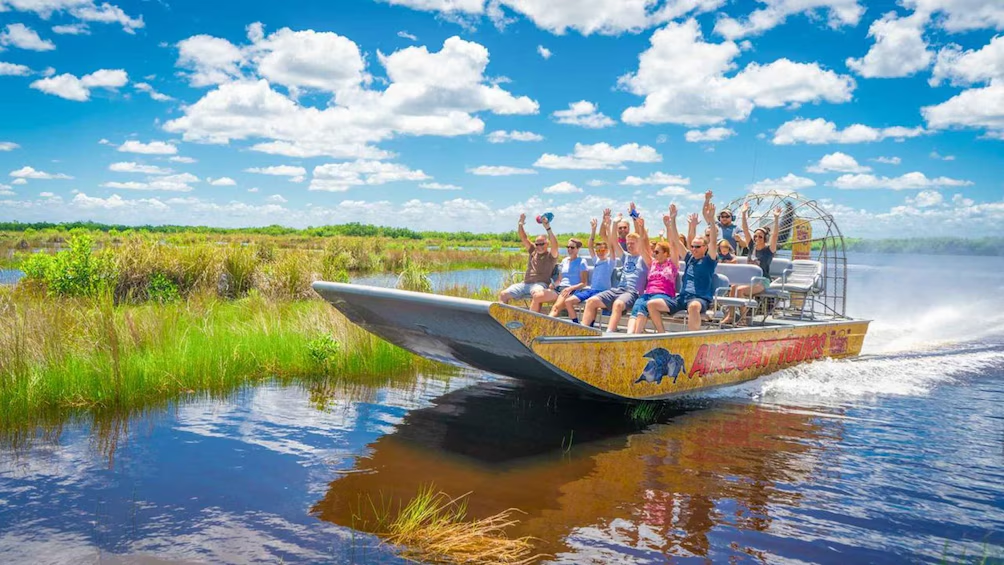
Embarking on an Everglades eco-adventure offers a unique opportunity to experience the delicate beauty and vibrant wildlife of this remarkable ecosystem. These examples showcase the diversity of experiences available, from guided tours to personal explorations, emphasizing responsible interactions with nature.
Experiencing the Everglades firsthand provides a deep appreciation for its fragile environment and the importance of conservation efforts.
A Typical Everglades Eco-Adventure Scenario
A typical Everglades eco-adventure often begins with a guided airboat tour, allowing visitors to quickly traverse the vast waterways. Following this, participants may engage in a guided nature walk, encountering diverse flora and fauna. Subsequent activities might include kayaking through a tranquil backwater or a birdwatching session to observe the rich avian life. The day often culminates with a ranger-led discussion about the ecological significance of the area, emphasizing the importance of responsible tourism. This multi-faceted approach provides a holistic understanding of the Everglades ecosystem.
A Detailed Description of a Guided Tour
A guided tour typically involves a knowledgeable naturalist or ranger who provides insights into the region’s unique flora, fauna, and history. The tour will often include stops at specific points of interest, highlighting the unique features of the ecosystem. The tour leader will discuss the importance of respecting the environment, explaining the impact of human activity and the necessity for preservation. They’ll also emphasize the need for staying on designated trails to avoid disturbing wildlife and maintaining a safe distance. Detailed information about the plants and animals encountered during the tour is provided, along with historical background and conservation efforts.
Kayaking Through the Everglades: Safety and Environmental Awareness
Participants must wear appropriate personal flotation devices (PFDs) and understand the importance of navigating carefully in the waterways, being aware of potential obstacles like submerged vegetation and currents. Environmental awareness is paramount; minimizing noise and maintaining a safe distance from wildlife is essential. Kayakers must be conscious of avoiding contact with sensitive plant life, maintaining the natural integrity of the area. Respect for the ecosystem is a core element of a responsible kayaking experience.
Observing Wildlife in the Everglades: A Vivid Narrative
Observing wildlife in the Everglades is a truly captivating experience. A visitor might spot a large wading bird, such as an American egret, gracefully stalking along the shoreline, or a family of alligators basking in the sun. A sense of tranquility pervades as one observes the intricate interactions between different species, each playing a critical role in the ecosystem. The Everglades’ biodiversity is awe-inspiring. The experience extends beyond simple observation; it’s about understanding the subtle behaviors and the vital roles each creature plays in the natural world.
Respecting the Everglades Ecosystem: A Crucial Scenario
Respecting the Everglades ecosystem involves a conscious effort to minimize human impact. One example is avoiding disturbing nesting sites, maintaining proper distances from wildlife, and not leaving any litter behind. Respecting the ecosystem also includes following all rules and guidelines set by park authorities. These measures help protect the delicate balance of the Everglades, ensuring the continuation of this unique and valuable ecosystem for future generations.
Visual Representation
The Everglades landscape, a unique ecosystem, presents a captivating array of visual experiences. From the vibrant green hues of the sawgrass prairies to the shimmering reflections on the water, the Everglades offers a breathtaking display of natural beauty. The diverse flora and fauna, meticulously adapted to the humid environment, contribute to the distinct visual character of this region.
Everglades Landscape
The Everglades landscape is characterized by a vast expanse of sawgrass marshes, a vibrant green that stretches as far as the eye can see. Interwoven with the sawgrass are patches of hardwood hammocks, darker and more dense, offering a stark contrast in texture and color. The terrain often appears flat and undulating, with subtle rises and depressions reflecting the slow-moving water courses. These features create a sense of serenity and vastness.
Diverse Vegetation
The Everglades boast an astonishing array of plant life, adapted to the unique conditions of the region. Sawgrass, a prominent feature, forms dense stands, its blades reaching high above the water. Other common vegetation includes cypress trees, their dark, gnarled branches draped with Spanish moss, creating a picturesque silhouette against the sky. Mangroves, with their unique root systems, line the shorelines of the water bodies. The colors range from the vibrant emerald green of the sawgrass to the deep browns and grays of the cypress trees, creating a complex and captivating visual tapestry.
Wildlife Appearance
The Everglades teems with a diverse array of wildlife, each with its distinctive visual characteristics. Colorful birds, such as herons, egrets, and ibis, with their striking white, gray, and reddish plumage, populate the skies and wetlands. Alligators, their dark, almost black bodies blending seamlessly with the murky water, lie in wait, a silent presence. Deer, with their reddish-brown coats, move through the undergrowth, their forms Artikeld against the background of the Everglades’ vegetation. Fish, with their varied scales and colors, dart through the water, reflecting the sunlight in their scales. Snakes, lizards, and other reptiles add further diversity to the visual landscape.
Sunrise and Sunset in the Everglades
A sunrise or sunset in the Everglades paints the sky with a breathtaking array of colors. The soft, golden hues of the rising or setting sun reflect on the water, creating shimmering patterns that dance across the surface. The colors often blend seamlessly from oranges and yellows to pinks and purples, creating a magical atmosphere. The clouds, illuminated by the vibrant light, add another layer of visual complexity to the scene. The quiet beauty of the moment is amplified by the absence of noise, the only sounds being the gentle lapping of water and the chirping of birds.
Water Bodies and Characteristics
The Everglades are characterized by a network of interconnected water bodies, each with its own unique visual and physical attributes. Shallow, slow-moving rivers, or “sloughs,” meander through the landscape, their waters often murky and brown. Cypress swamps, with their still waters reflecting the surrounding vegetation, provide serene pockets of tranquility. Lake Okeechobee, the largest lake entirely within the contiguous United States, provides a vast expanse of water, and its shoreline often has a different character. The color of the water varies greatly depending on the specific body of water and the surrounding vegetation, ranging from clear, light-brown to murky, dark-brown.
Ultimate Conclusion
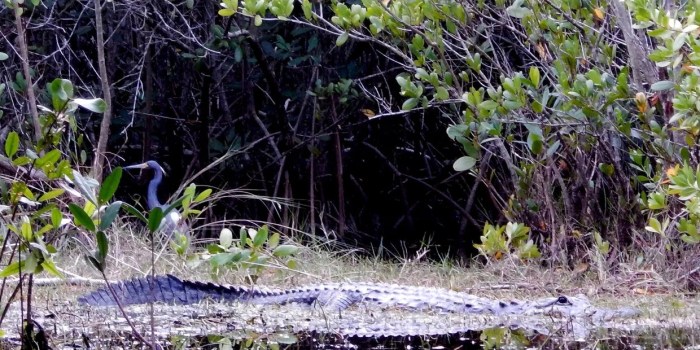
Source: wsimg.com
In conclusion, an Everglades eco adventure provides an enriching experience that blends exploration with conservation. From choosing the perfect adventure to respecting the delicate ecosystem, this guide equips you with the knowledge and insights to make the most of your trip. Remember to prioritize responsible tourism, support local communities, and leave no trace behind. The Everglades await your exploration!
